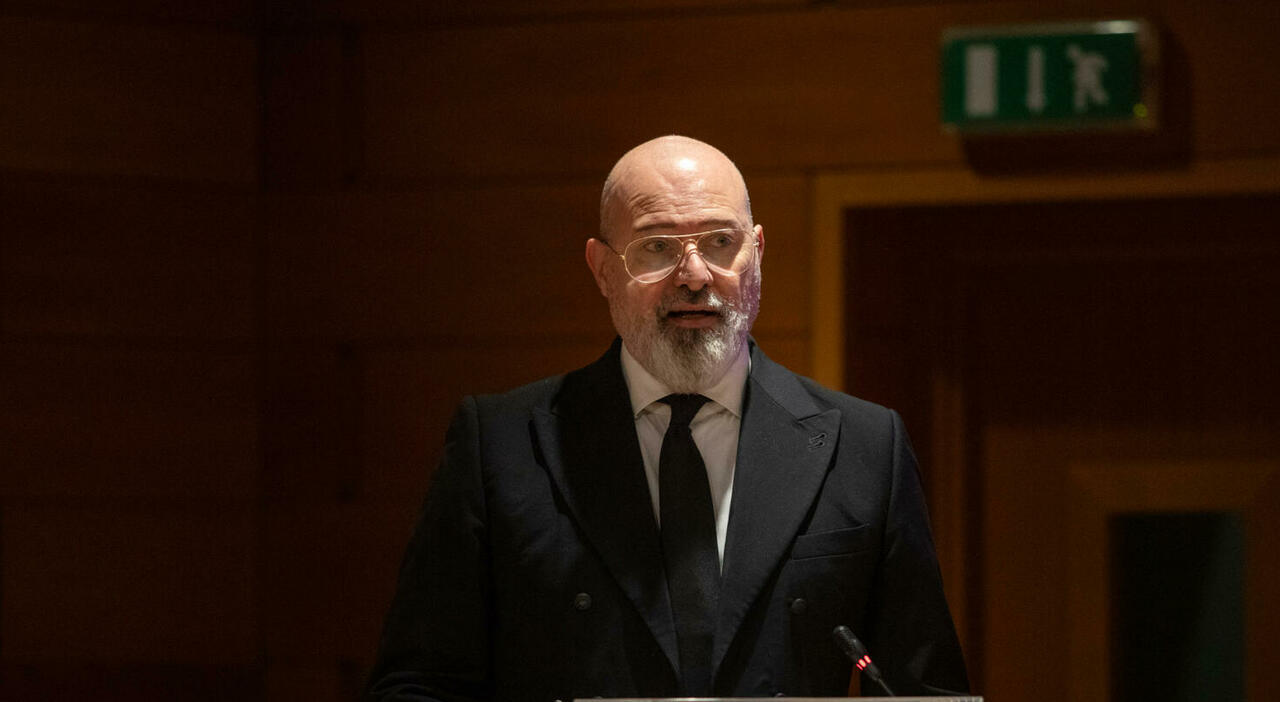The president of PD Stefano Bonaccini yesterday made a surprise visit to the Vatican, invited to present an exhibition at the Vatican Museums on embroidery inspired by the Canusian Art and, on that occasion, he also evoked in his short speech the Countess Matilde di Canossa who is buried in San Pietro, as well as the famous historical events linked to her. "Today the saying of going to Canossa is still remembered, and it always means something". The reference made by the president of Emilia Romana was about the events dating back to the Middle Ages when Emperor Henry IV was forced to stay five days in the cold, in the snow, outside the castle of Canossa, in the province of Reggio Emilia, before being received (and forgiven) by Pope Gregory VII who had excommunicated him.
At the speakers' table, next to Stefano Bonaccini, was Cardinal Mauro Gambetti, archpriest of San Pietro who was the host. The invitation aimed at the exhibition on the Ars Canusina ironically took place in one of the most tormented and difficult moments for Catholics in the party led by Elly Schlein. In fact, the grumbling of the Church for the surprising defenestration of the Veneto regional councilor of the PD, Anna Maria Bigon, for having disregarded the party's orders by voting according to conscience and sinking, with her vote, the regional regulation on end of life. A passage that cost Bigon dearly as she was ousted from the position she had, inevitably raising doubts and questions about whether there is actually still room within the Democratic Party for the Catholic component and freedom of conscience on so-called non-negotiable values. In these days, the noble father of left-wing Catholics, Pierluigi Castagnetti has repeatedly brought to the surface, publicly and privately, his concern for the future ("In this party there are now too many Catholics uncomfortable with ethical issues") and so has also the former minister Graziano del Rio, all Emilians, like Bonaccini.
After the conference at the Vatican Museums, the president of the PD, was asked to Bonaccini an inevitable question given the circumstances and the reference to the forgiveness of Canossa. President, do you feel a bit like Henry IV at Canossa after the Bigon case? The reaction of the President of the PD left those present astonished by the reaction. Clearly uncomfortable, he raised his voice, expressing all his irritation for a topic that he obviously wanted to leave out of the door and did not want to be raised. He then quickly left the room, accompanied by the director of the Vatican Museums, Barbara Jatta who escorted him to the exit. The people present, witnesses of the surprising sideshow, did not hide their surprise also because just before, regarding Matilde di Canossa, in the various interventions in the room it was pointed out by one of the canons of San Pietro how the historical story of Canossa could also serve today as a starting point for reflection for many politicians. "Matilde found in faith a way to manage power" that never transcended the humble, the poor, those who had no voice. "Isn't it an example even now?". Of course, there was no specific reference to the Bigon case even though on the horizon it was difficult not to see the storm that is crossing the Catholic component.
Pierluigi Castagnetti also this morning on X entrusted his state of mind to a phrase of Don Bosco: "If God is with us, then we are the majority". He was echoed by Stefano Lepri, Catholic exponent of the PD. "We in the PD are there and we intend to stay there" but "with our heads held high and in respect of what is a constitutive principle of a plural party like the PD, the respect for freedom of conscience".
The beautiful exhibition that opened at the Vatican Museums, set up in a minor room and visible until the end of February, has exposed to the public the artifact embroidered by Reggio Ricami – the so-called Embroiderers of the Pope - destined for the altars of San Pietro and made according to the ancient tradition inspired by the Matildic friezes. Also on display is a very rare illuminated code in which the countess who ruled "with manly art" over half of Italy at the turn of the millennium is spoken of, uniting faith with the art of government.
This article is automatically translated
